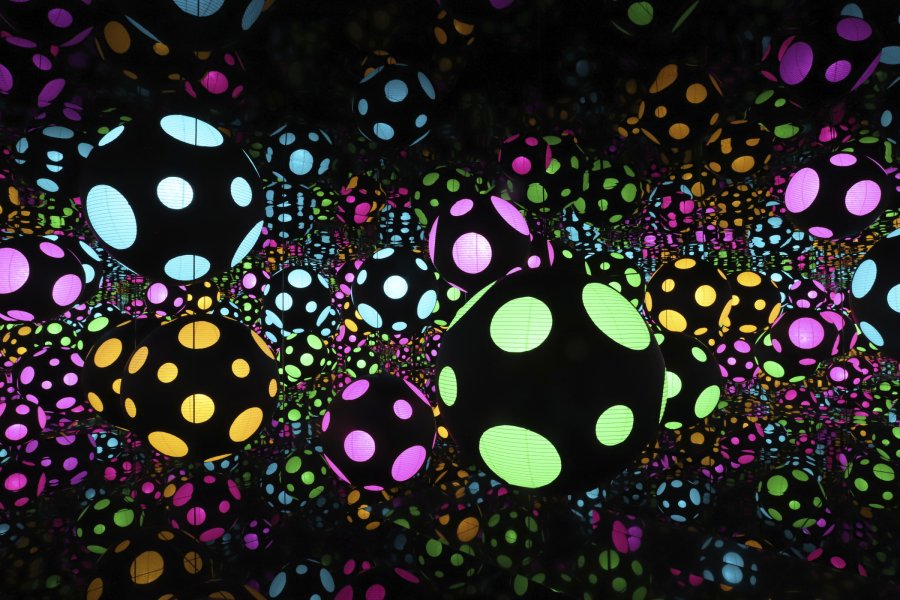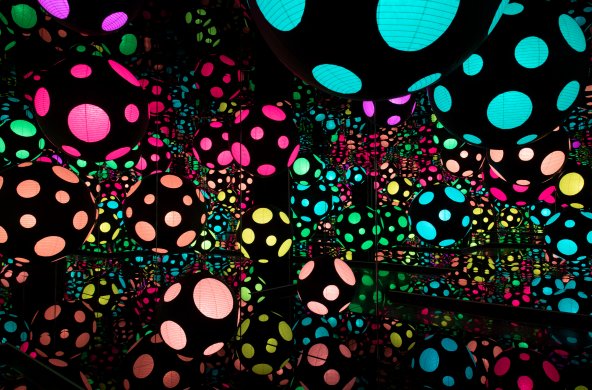Yayoi Kusama
Yayoi Kusama describes herself as an “obsessional artist.” Her wide-ranging body of work reflects a lifelong preoccupation with the infinite and sublime, pattern and repetition. After studying traditional Nihonga painting in Kyoto, Kusama moved to New York in the late 1950s. There, she became a key figure in the emerging fields of Minimalism, Op and Pop art, assemblage, and performance, working alongside and influencing such artists as Allan Kaprow, Claes Oldenburg, and Andy Warhol. By the late 1960s, she had risen to critical prominence for her radical antiwar Happenings, which featured nude and polka-dotted performers on the streets of New York. Around the same time, she began working with optics, mirrors, electric lights, sound, and other kinetic and interactive elements, inspired by her connection to members of the Nul, ZERO, and New Tendencies artists’ groups in Europe. Kusama returned to Japan in 1973, where her extraordinary and ongoing artistic endeavors have spanned across mediums and beyond the visual arts to literature and fashion.



